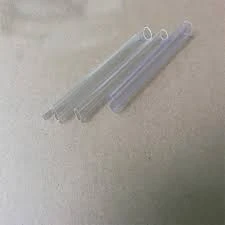Oct . 17, 2024 01:00 Back to list
Understanding PPR Hot Water Pipe Applications and Benefits for Plumbing Systems
Understanding PPR Hot Water Pipes An Essential Component for Modern Plumbing
In the realm of plumbing, the materials used can significantly influence the efficiency, safety, and longevity of the systems we rely upon for clean water and heating. One such material that has gained substantial popularity in recent years is Polypropylene Random Copolymer (PPR). Particularly, PPR pipes are increasingly being used for hot water applications due to their unique attributes and advantages over traditional piping materials.
What is PPR?
Polypropylene Random Copolymer (PPR) is a thermoplastic polymer that has been adapted for various types of piping, especially in supply lines for drinking water and hot water systems. It is known for its strength, durability, and resistance to high temperatures and pressure. PPR pipes come in a range of sizes and colors, making them suitable for a variety of plumbing requirements.
Advantages of PPR Hot Water Pipes
1. High Resistance to Temperature and Pressure One of the most significant benefits of PPR is its ability to withstand high temperatures. PPR pipes can handle temperatures of up to 95 degrees Celsius (203 degrees Fahrenheit), making them an excellent choice for hot water supply systems. Additionally, PPR pipes can withstand high pressure, which is crucial for maintaining water flow in residential and commercial applications.
2. Corrosion and Scale Resistance Traditional metal pipes, such as copper or galvanized steel, can succumb to corrosion over time, leading to leaks and reduced water quality. PPR pipes, however, are resistant to corrosion and scaling, ensuring a longer lifespan and minimal maintenance. This is particularly beneficial in areas with hard water, where mineral buildup can obstruct flow in conventional pipes.
3. Lightweight and Easy to Handle Compared to metal pipes, PPR pipes are considerably lighter, making transportation and installation easier for contractors. The lightweight nature reduces the overall structural load on buildings and makes it simpler to maneuver around tight spaces.
4. Energy Efficiency PPR pipes exhibit low thermal conductivity, which means they retain heat effectively and minimize energy loss in hot water systems. This feature can lead to lower energy bills, as the system requires less energy to maintain desired water temperatures.
ppr hot water pipe

5. Cost-Effective Although the initial investment may be similar to other piping materials, the long-term savings associated with reduced maintenance, energy efficiency, and durability make PPR a cost-effective choice. Over time, users may find that they save significantly on both repair costs and energy expenses.
Installation and Maintenance
When it comes to installation, PPR pipes can be joined through a process called fusion welding, ensuring a seamless bond between pipes and fittings. This method not only enhances the system's integrity but also eliminates potential leak points, which are common in systems that utilize mechanical fittings.
Maintaining PPR piping systems is relatively straightforward. Regular inspections for obstructions or obvious wear can help ensure the longevity of the pipes. In general, PPR systems require minimal maintenance, allowing homeowners and businesses to focus more on their daily operations rather than plumbing issues.
Environmental Considerations
The use of PPR in hot water applications also presents environmental benefits. PPR is 100% recyclable, which helps reduce waste in landfills. Furthermore, the energy efficiency of PPR systems contributes to lower carbon footprints, aligning with global efforts to promote sustainable practices in building and construction.
Conclusion
As the demand for efficient and reliable plumbing solutions continues to grow, PPR hot water pipes stand out as a modern choice for both residential and commercial applications. With their extensive advantages - from high resistance to temperature and pressure, corrosion resilience, and energy efficiency to cost-effectiveness and ease of installation - PPR pipes are poised to play a significant role in the future of plumbing. As more builders, plumbers, and homeowners become educated on the benefits of this remarkable material, PPR is likely to become a standard in the hot water piping market, providing a reliable solution for years to come.
-
High Transparency PVC Clear Sheet Super Transparency PVC Sheets & HDPE Cutting Board Supplier
NewsJul.04,2025
-
High-Quality PVC-M Pipe Supplier Trusted PVC Pipe Company & 75mm PVC Connection Pipe Solutions
NewsJul.04,2025
-
PVC Transparent Sheet Roll - Durable & Flexible PVC Plastic Sheet Roll for Industrial & Home Use
NewsJun.24,2025
-
High-Quality PVC PPR Pipes and Fittings Durable ERA PPR Solutions
NewsJun.10,2025
-
High-Quality Large HDPE Sheets & Large Diameter PVC Pipe Durable Large PVC Pipe Supplier
NewsJun.10,2025
-
High Density Polyethylene Cutting Board - Durable & Food Safe
NewsJun.09,2025

